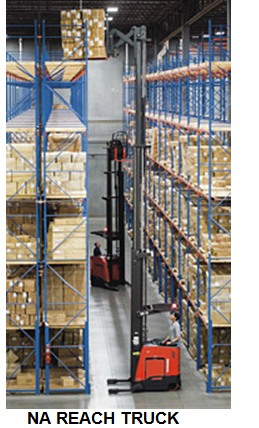Holste Says: |
 |
| Companies who are looking for additional pallet storage space should first make sure they are deploying the most efficient pallet handling equipment and storage methods. |
|
What Do You Say?
|
|
|
|
Previous Columns by
Cliff Holste |
|
|
While leasing additional outside storage is usually considered to be a temporary quick fix, it often turns out to be a much longer term solution. It’s generally understood that having overflow inventory in an outside location increases operating overhead and complicates order fulfillment operations. Another problem is that oftentimes much of that additional storage space is not being used to its full potential. This is especially true if the company is operating in that space with conventional counterbalanced forklift trucks that require +12 foot wide aisles. Even though many of these leased facilities have a clear height of 30 ft. or more the counterbalanced trucks are limited to stacking (4) pallets high. With this type of storage configuration, 1,000 pallets can require as much as 10,500 sq. ft. of floor space.  By simply replacing the forklifts with Narrow Aisle Reach Trucks that can operate in a clear aisle space of 8 feet while stacking (6) pallets high, approximately 1,870 pallet loads can be stored in the same 10,500 sq. ft. of floor space. This equates to an increase of over 80% in the number of loads stored. By simply replacing the forklifts with Narrow Aisle Reach Trucks that can operate in a clear aisle space of 8 feet while stacking (6) pallets high, approximately 1,870 pallet loads can be stored in the same 10,500 sq. ft. of floor space. This equates to an increase of over 80% in the number of loads stored.
NA Reach trucks (see picture) are available for purchase or lease from all major fork truck vendors and are equipped with a pantograph type of reach mechanism that scissors the pallet load forward from the mast. In operation the truck turns to face the rack and then extends the pallet load out into the slot. Due to the truck’s compact overall length and the fact that it carries its forks in a retracted position, it requires substantially less room to turn than does a conventional counterbalanced forklift.
A more aggressive (and expensive) approach to storage space optimization involves Very Narrow Aisle (VNA) equipment. Here Swing-Reach Turret Trucks operate in aisles that are 66 inches wide. This is a storage and retrieval system configuration that is most often justified for high storage density, high velocity operations. |